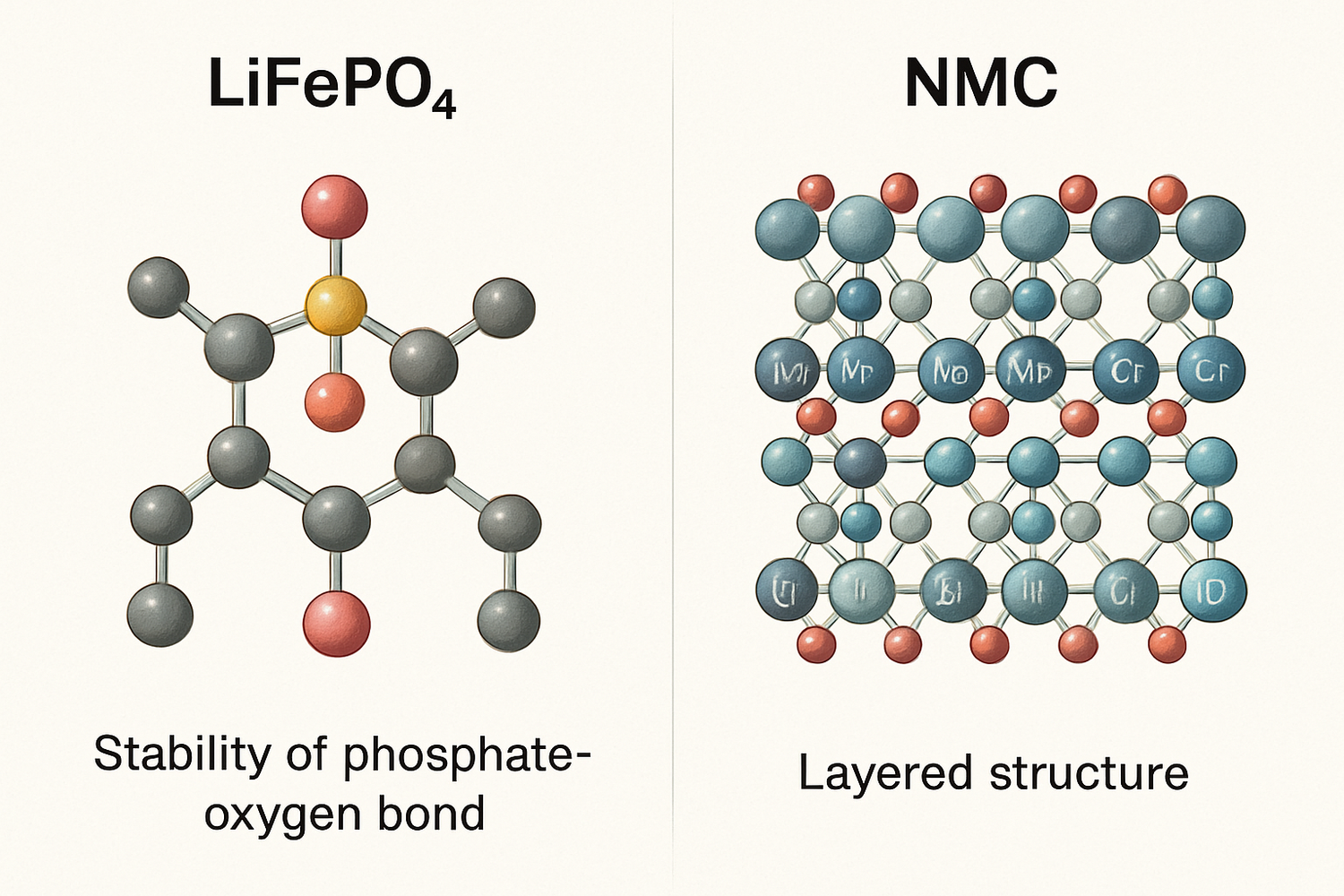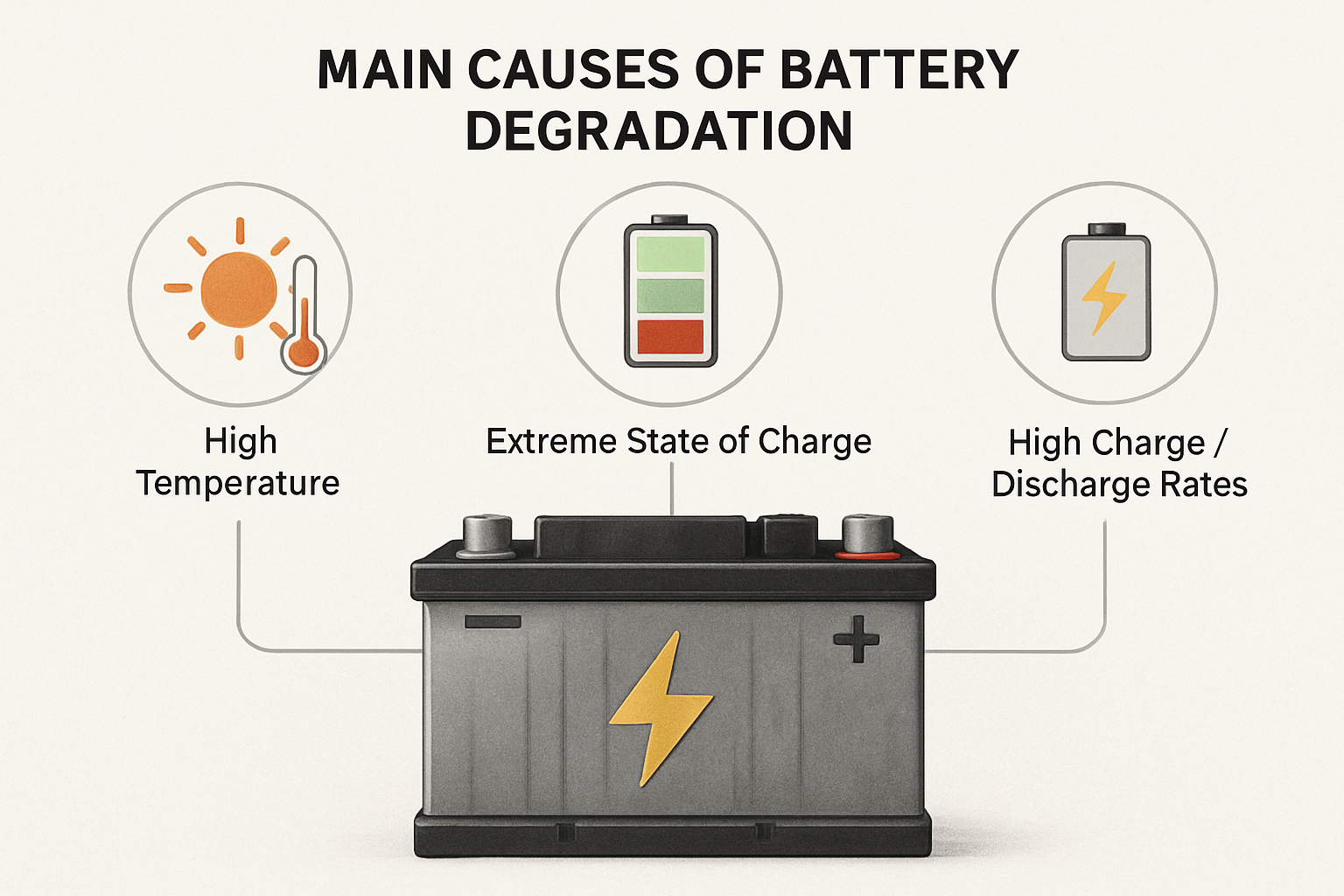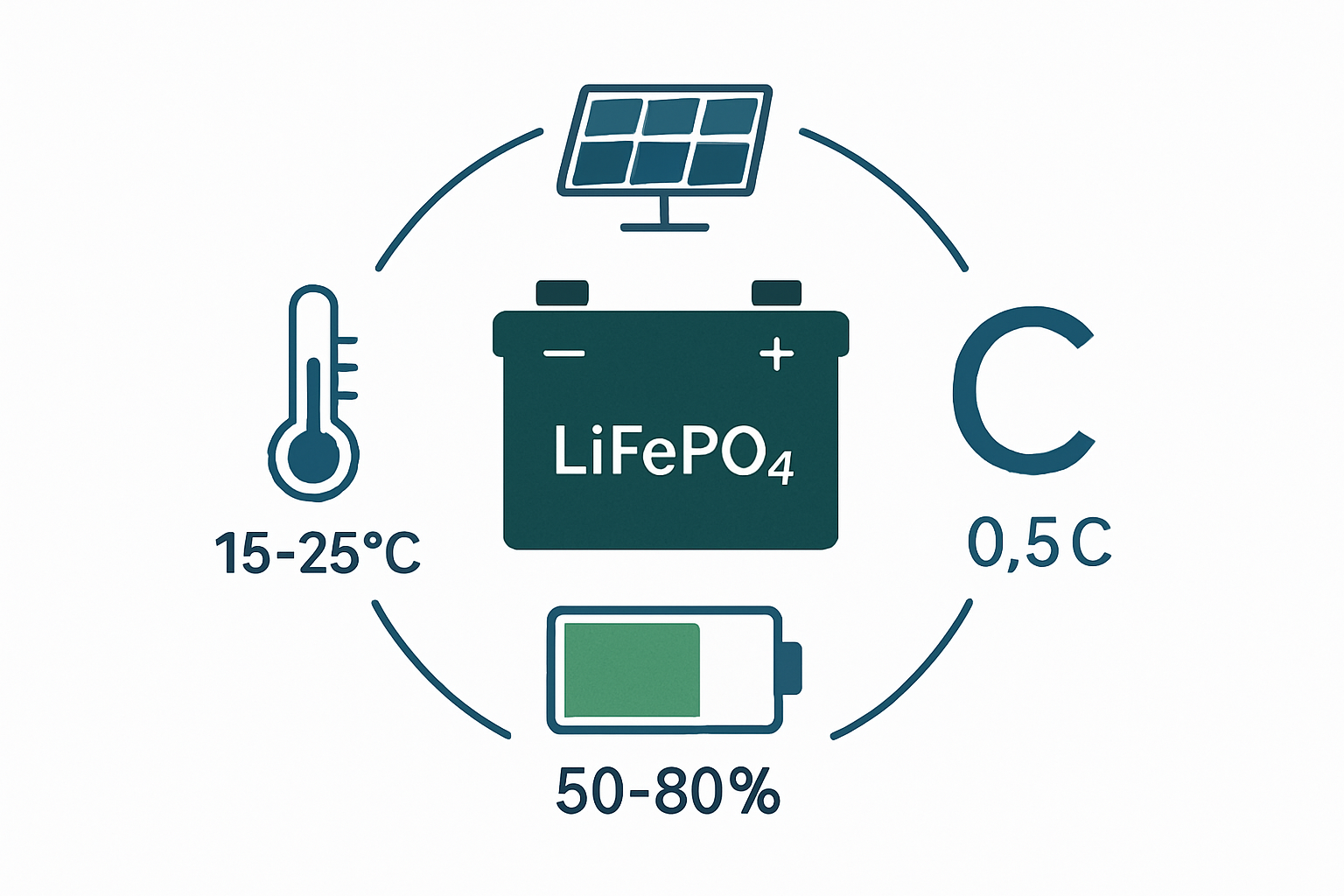Selecting the right battery for a solar energy system is a critical decision that impacts long-term performance, safety, and value. Two leading lithium-ion chemistries dominate the market: Lithium Iron Phosphate (LiFePO4) and Nickel Manganese Cobalt (NMC). While both are powerful options, they degrade differently over time. Understanding these differences is key to choosing a battery that aligns with your energy goals and ensures a durable investment.
Understanding Battery Degradation in Solar Systems
Battery degradation is the natural and irreversible loss of a battery's capacity to store and deliver energy over its lifespan. This process affects all batteries, but its rate is influenced by chemistry, usage patterns, and environmental conditions. For solar energy systems, where batteries cycle daily, managing degradation is vital for sustained energy independence.
What is Battery Degradation?
Degradation manifests as a reduction in total storage capacity. A new battery might hold 10 kWh of energy, but after several years of use, its maximum capacity will decrease. This is measured in two primary ways: cycle life, the number of charge-discharge cycles a battery can endure before its capacity drops to a certain level (typically 80%), and calendar aging, which is degradation that occurs even when the battery is not in use.
Key Factors Influencing Degradation
Several operational factors can accelerate the degradation of solar batteries:
- Temperature: Extreme heat speeds up internal chemical reactions, causing components to break down faster. Cold temperatures can hinder performance and efficiency.
- Depth of Discharge (DoD): This refers to the percentage of the battery's capacity that is used in a cycle. Deeper discharges put more stress on the battery, leading to faster wear.
- Charge and Discharge Rates (C-rate): Charging or discharging a battery too quickly generates excess heat and can strain its internal components, accelerating degradation.
- State of Charge (SoC) Management: Consistently charging a battery to 100% or leaving it at a very low state of charge for extended periods can stress the chemistry and shorten its lifespan.
LiFePO4 Batteries: The Endurance Champion
LiFePO4, often abbreviated as LFP, has earned a reputation for its exceptional durability and safety, making it a preferred choice for stationary energy storage systems where longevity is paramount.
Chemical Stability and Safety
The core advantage of LiFePO4 chemistry lies in its molecular structure. The phosphorus-oxygen bonds in its olivine structure are incredibly strong, making the battery chemically and thermally stable. This stability significantly reduces the risk of thermal runaway, a dangerous condition where the battery overheats uncontrollably. LiFePO4 batteries can withstand higher temperatures before becoming unstable, with breakdown temperatures reaching 500-600°C compared to 180-250°C for NMC batteries. This makes LFP an inherently safer option for residential and commercial installations.
Superior Cycle Life and Longevity
LiFePO4 batteries are known for their remarkable cycle life. They can typically endure 3,000 to 6,000 full charge-discharge cycles before their capacity significantly declines. Some studies suggest this number can be even higher under optimal conditions. This long lifespan translates to a better long-term value and a lower Levelized Cost of Storage (LCOS), even if the initial investment is slightly higher.
Performance Under Stress
Compared to NMC, LFP chemistry is more resilient to the stresses common in solar applications. It tolerates deeper depths of discharge with less impact on its overall lifespan and performs reliably across a broader range of temperatures, particularly high temperatures. This robustness ensures consistent performance day after day.
NMC Batteries: The Powerhouse
NMC batteries are celebrated for their high energy density, which allows them to pack more power into a smaller and lighter package. This characteristic has made them a dominant choice for electric vehicles and other applications where space is a premium.
Higher Energy Density
Energy density refers to the amount of energy a battery can store relative to its volume or weight. NMC batteries excel here, with typical energy densities ranging from 160 to 270 Wh/kg, compared to 100 to 180 Wh/kg for LiFePO4. According to a report by the The Role of Critical Minerals in Clean Energy Transitions, this high energy density makes NMC ideal for applications like wall-mounted residential batteries where a compact design is crucial.
Degradation Characteristics
The trade-off for higher energy density is a shorter lifespan and greater sensitivity to stress. NMC batteries typically offer a cycle life of 1,000 to 3,000 cycles. They are more susceptible to degradation from high temperatures and deep discharge cycles. The higher operating voltage of NMC chemistry also puts more stress on the battery's internal components, which can accelerate the breakdown of materials over time.
Application Sweet Spots
NMC batteries are best suited for applications where maximizing energy storage in a limited space is the primary goal. Their lightweight and compact nature is a significant advantage in portable electronics and electric vehicles. For stationary storage, they are a viable option when physical space is severely restricted.
Head-to-Head Comparison: Degradation and Performance
Choosing between LiFePO4 and NMC involves balancing the need for longevity against the demand for energy density. The following table summarizes their key differences:
| Feature | LiFePO4 (LFP) | NMC |
|---|---|---|
| Cycle Life | 3,000 - 6,000+ cycles | 1,000 - 3,000 cycles |
| Thermal Stability | Very high (unstable at 500-600°C) | Moderate (unstable at 180-250°C) |
| Energy Density | Lower (100-180 Wh/kg) | Higher (160-270 Wh/kg) |
| Safety | Excellent, low risk of thermal runaway | Good, but requires careful thermal management |
| Key Degradation Factors | Extreme cold, very high C-rates | High temperatures, deep discharge, high voltage |
Real-World Implications for Solar Owners
For a typical homeowner, the superior cycle life of a LiFePO4 battery means a longer-lasting energy storage system and a more reliable return on investment. The growing deployment of solar-plus-storage systems is essential for grid stability, as highlighted by the U.S. Department of Energy, making the choice of a durable battery technology even more critical. A battery that maintains its capacity for more cycles ensures you can store and use your solar energy effectively for many years. For a deeper look at how these metrics translate into real-world performance, the ultimate reference on solar storage performance provides detailed benchmarks and calculations.
Making the Right Choice for Your Energy Needs
Ultimately, the choice between LiFePO4 and NMC depends on your specific priorities. LiFePO4 stands out for its safety, longevity, and long-term value, making it the preferred chemistry for most residential and commercial solar storage applications. Its resilience to degradation ensures a reliable source of power for years. NMC offers a powerful, space-saving solution, but its shorter lifespan and higher sensitivity to operating conditions require careful consideration. By understanding how these batteries degrade, you can make an informed decision that secures your path toward energy independence.
Frequently Asked Questions
Which battery is safer, LiFePO4 or NMC?
LiFePO4 is widely considered the safer chemistry. Its superior thermal and chemical stability make it far less prone to thermal runaway, providing a significant safety advantage for home energy storage systems.
Does temperature affect both battery types equally?
No. While all batteries are affected by temperature, NMC is more sensitive to high heat, which can significantly accelerate its degradation. LiFePO4 has better thermal stability and performs more reliably in warmer conditions.
Why would I choose an NMC battery if LiFePO4 lasts longer?
You might choose an NMC battery if space and weight are your primary constraints. Its higher energy density allows it to store more energy in a smaller package, which can be a critical advantage in applications with limited physical space, such as certain wall-mounted home units or electric vehicles.





Leave a comment
All comments are moderated before being published.
This site is protected by hCaptcha and the hCaptcha Privacy Policy and Terms of Service apply.